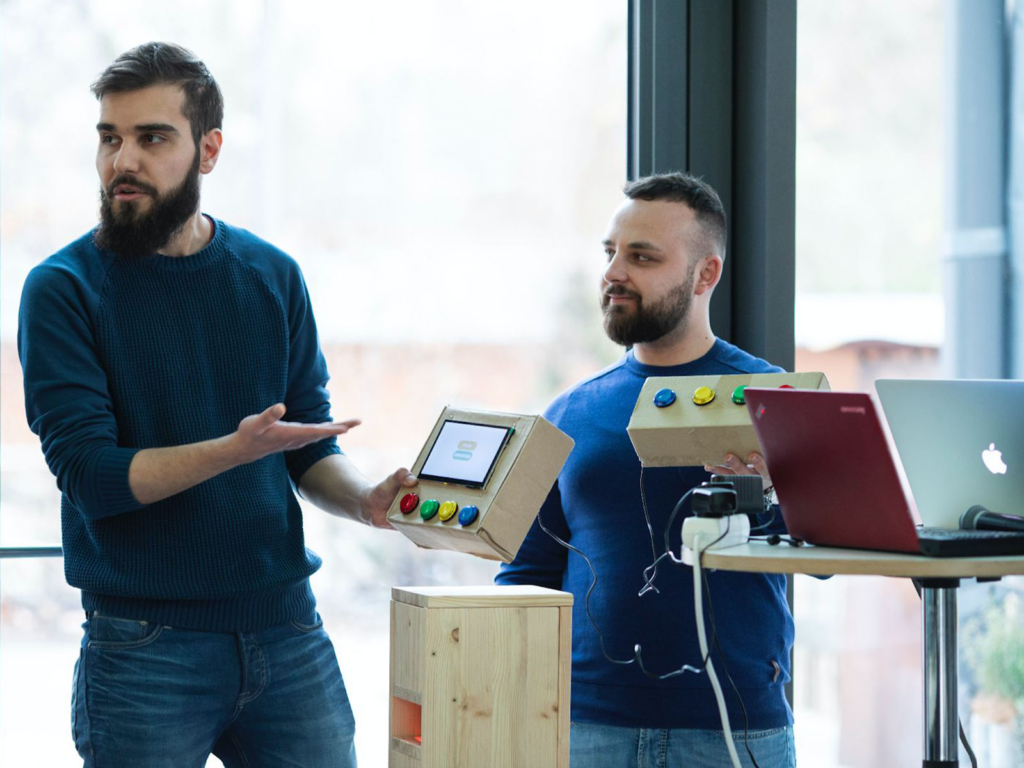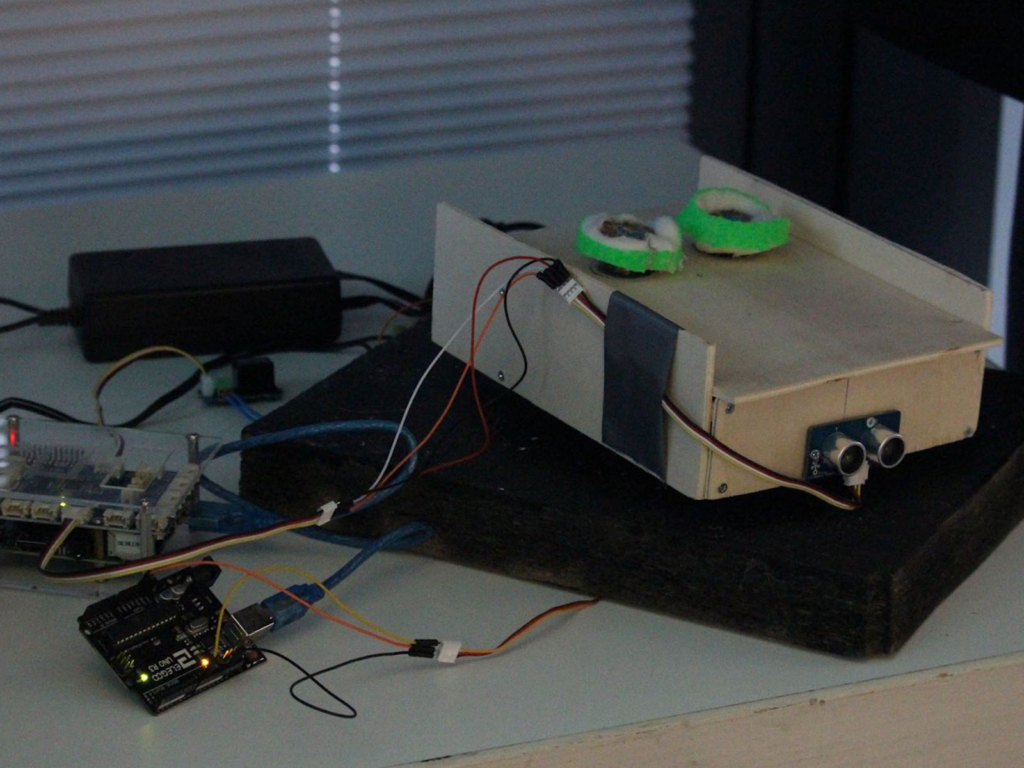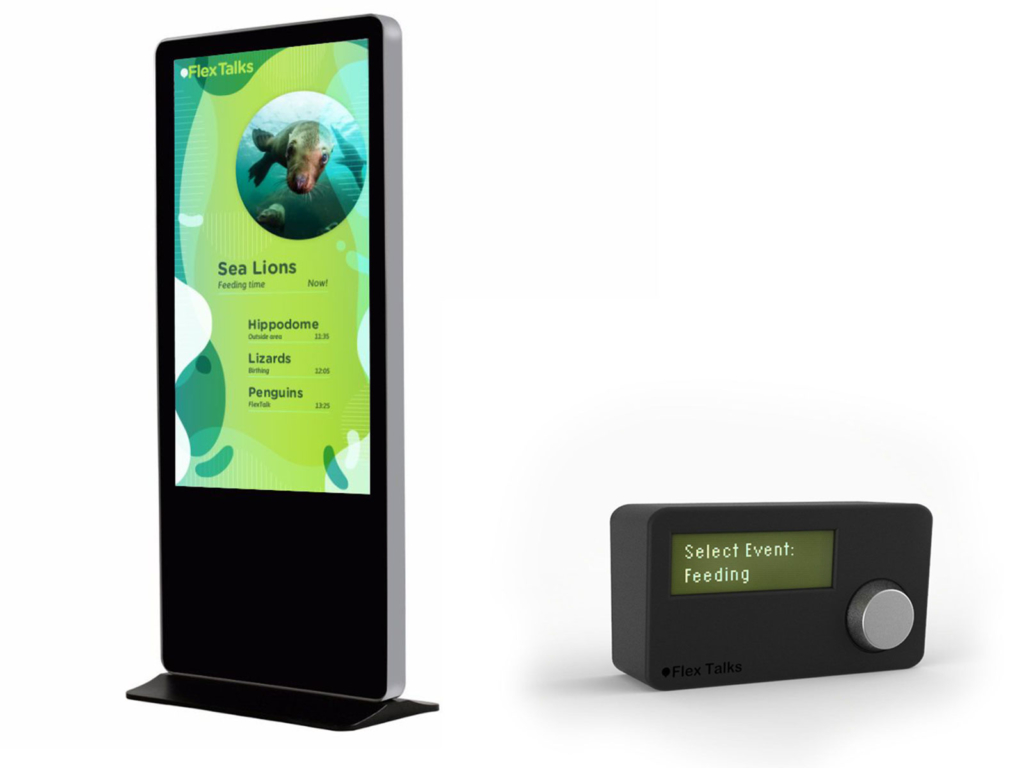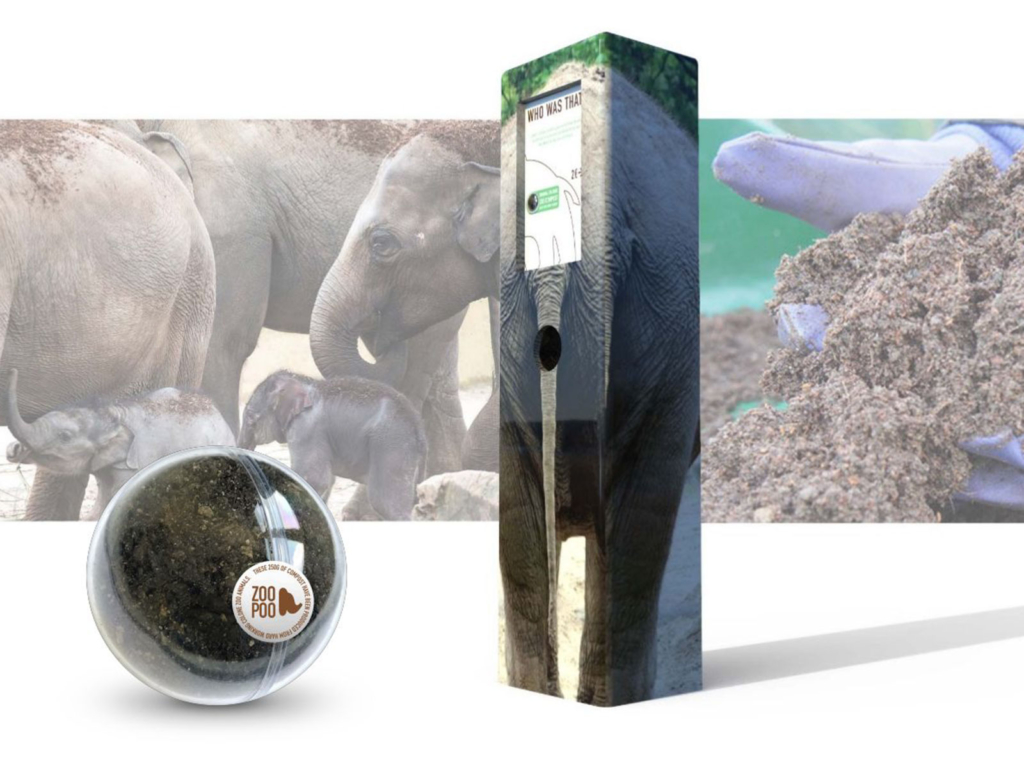In collaboration with the Cologne Zoo, design students of KISD – Köln International School of Design, together with computer science and business administration students of TH Köln, addressed the question on how the “Internet of Things (IoT)“ can transform the ecosystem of a zoo, the life of zoo animals, and the experience of visiting? In eight weeks, the interdisciplinary teams of the project “IoT at the Zoo“ performed on-site field research at the Cologne zoo, developed functioning prototypes of new interactions, transactions and experiences, and then pitched these prototypes to a professional jury.
The interdisciplinary project was initiated by three study programs of TH Köln: Computer Science, Integrated Design, and Economics. Prof. Dr. Matthias Böhmer, Prof. Nina Juric, Prof. Dr. Lasse Scherffig, and Prof. Dr. Christian Zabel brought a group of about 40 (inter)national students together. In interdisciplinary teams, participants were assigned to design a creative IoT product backed-up by a realistic business plan, a functioning prototype, and a comprehensive design strategy and campaign.
From November 2018 until the end of January 2019, students could access all areas of the zoo. They received inputs from Prof. Theo Pagel (CEO/the director of the Zoo) and Christopher Landsberg (the zoo’s CFO), who shared inside information, facts and figures, showed the ecosystem of the zoo, and offered an ideal collaborative environment to work in. The teams were able to work with animal keepers and could see behind the curtains of the visitors‘ perspective.
After eight weeks, the project outcomes ranged from networked vending machines for compost made from animal feces, interfaces for human-animal interaction, processes and interfaces that reconfigure work/feeding schedules on a digital signage system, to locative games, and a smartphone-controlled feeding cannon for the zoo’s famous elephant house.
Prof. Theo B. Pagel said: “It was impressing to see the different ideas which brought up quite a number of really interesting projects. More or less all showed the vision of interactivity. For us, this was an unusual, but mind-opening process from outsiders. We enjoyed it very much and hope that we can repeat such an interdisciplinary process.“
On January 21, the final presentations took place at the Cologne Zoo event area with all 40 students coming together in seven groups to present their projects – in a ten ten-minute pitch and a short Q&A. Three winner teams were announced.
- 1st winner: Team ZooPoo
Students: Annette Malé, Claudia Vila, Jan-Ole Baars, Daniel Körner-Schmitz, Omar Ortiz Abrego, Meike Krautscheid
The idea: To create an alternative way to manage the zoo waste in order to reduce costs, generate revenue, and help save the world. Turning zoopoo into gold with vending machines and a new developed compost series made of zoo feces. - 2nd winner: Team Zootainment
Students: Shoshin Nakaosne, Yi Wang, Jan Mehr, Melanie Gereke, Bartlomiej Gambus
The idea: To develop mobile application and enrichment machines to interact with visitors and animals. - 3rd winner: Team Zoolympics
Students: Max Müller, Julian Schöbel, Michelle Bocker, Jan Hocker, Tim Kleinwächter
The idea: Zoolympics strives to improve the experience of education in zoos with interactive games. Zoolympics is intended tob e an entertaining way to connect visitors to the zoo animals by using the IoT.
The prestigious jury consisted of professionals from every discipline: Dr. Miralem Gazibegović (Deutsche Telekom), Thorsten Muth (ReInvent GmbH), Gregor Kuschmirz (Denkwerk), Michael Lang (Deutsche Telekom), Prof. Theo B. Pagel (CEO/Zoodirector Cologne Zoo) and Christopher Landsberg (CFO Cologne Zoo). Jury member Gregor Kuschmirz, Motion Director and Head of Denkwerk’s IoT Lab “Thinx”concluded: “I was surprised by the variety of approaches, which convincingly demonstrated how designers can improve future zoo visits through IOT-solutions, when joining forces with computer scientists and economists.”
Credits:
All Participants of “IoT at the Zoo“:
Team Flextalk: Marvin Lentes, Molly Oberholtzer, Christian Laprell, Alè Anastasiou, Nikolai Gerber, Jan Vianden
Team Animotion: Lukas Besch, Peter Varga, Lea Johanna Gülker, Lars Hauptmann, Daniel Franken, Murat Damar
Team Zoolympics: MaxMüller, JulianSchöbel, MichelleBocker, JanHocker, TimKleinwächter
Team Zoopoo: Annette Malé, Claudia Vila, Jan-Ole Baars, Daniel Körner-Schmitz, Omar Ortiz Abrego, Meike Krautscheid
Team Monkey See, Monkey Do: Ana Oliveira, Bárbara Vitoriano, Hakan Topal, Muhamet Topcu and Volkan Yüca
Team Zootainment: Shoshin Nakaosne, Yi Wang, Jan Mehr, Melanie Gereke, Bartlomiej Gambus
Team Gorilla Bar: Dieter Max, Arael Roca Hanson, Arisa Iwazaki, Anna Urev
Fotocredits:
KISD Fotostudio and AG / Damla Ruzgar, Sina Szepanski, Hanna Freres, Michaela Patschurkowski


























